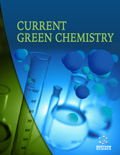Abstract
Pharmaceutical contamination, resulting from the discharge of active pharmaceutical ingredients (APIs) and other related compounds into the water, has become a growing concern due to its potential adverse effects on ecosystems and human health. This review article aims to examine the many facets of pharmaceutical contamination and highlight the most recent developments in its remediation. The effects of pharmaceuticals, sources, and pathways of pharmaceutical contamination, as well as the difficulties in detecting and evaluating its toxicities, have been included in the present manuscript. Nowadays various remediation strategies are employed to mitigate pharmaceutical contamination in water. Conventional wastewater treatment techniques, including activated sludge processes and membrane filtration, are effective in removing a portion of the pharmaceutical compounds. However, advanced oxidation processes such as ozonation and photocatalysis have shown promising results in enhancing the degradation of recalcitrant APIs. Nanotechnology-based approaches, such as the use of nanoparticles for adsorption and degradation, and bioremediation methods utilizing microbial degradation, enzymatic processes, and phytoremediation, offer potential future directions for efficient and sustainable remediation. This review describes the most recent developments, current status, and potential research directions with the future prospects of pharmaceutical pollutants.
Keywords: Wastewater treatment, advanced oxidation processes, nanotechnology, bioremediation, degradation, active pharmaceutical ingredients.
[http://dx.doi.org/10.3390/ijerph18052532] [PMID: 33806343]
[http://dx.doi.org/10.1146/annurev-environ-052809-161223]
[http://dx.doi.org/10.1038/nrmicro2693] [PMID: 22048738]
[http://dx.doi.org/10.1016/S0140-6736(13)60604-2] [PMID: 23489756]
[http://dx.doi.org/10.3390/microorganisms7060180] [PMID: 31234491]
[http://dx.doi.org/10.1098/rstb.2013.0580] [PMID: 25405968]
[http://dx.doi.org/10.4103/0253-7613.100363] [PMID: 23112410]
[http://dx.doi.org/10.1038/sj.embor.7400307] [PMID: 15577922]
[http://dx.doi.org/10.3390/ijerph182211765] [PMID: 34831521]
[http://dx.doi.org/10.1289/ehp.8068] [PMID: 16818261]
[http://dx.doi.org/10.3390/ijerph7113929] [PMID: 21139869]
[http://dx.doi.org/10.3390/ijms21061929] [PMID: 32178293]
[http://dx.doi.org/10.1289/ehp.99107s6907] [PMID: 10592150]
[http://dx.doi.org/10.3390/w5031346]
[http://dx.doi.org/10.1016/j.scitotenv.2016.07.085] [PMID: 27443461]
[http://dx.doi.org/10.1007/s11356-018-2124-x] [PMID: 29728969]
[http://dx.doi.org/10.1016/j.heliyon.2022.e11162] [PMID: 36387561]
[http://dx.doi.org/10.1016/S0043-1354(02)00570-5] [PMID: 12697241]
[http://dx.doi.org/10.2166/wst.2014.172] [PMID: 24901634]
[http://dx.doi.org/10.1016/j.ultsonch.2021.105656] [PMID: 34274706]
[http://dx.doi.org/10.2139/ssrn.3366899]
[http://dx.doi.org/10.1016/j.jwpe.2020.101161]
[http://dx.doi.org/10.1016/j.cej.2017.04.106]
[http://dx.doi.org/10.3390/app11146659]
[http://dx.doi.org/10.1016/j.envint.2019.04.075] [PMID: 31150974]
[http://dx.doi.org/10.1038/nrmicro3439] [PMID: 25817583]
[http://dx.doi.org/10.1016/j.sciaf.2022.e01288]
[http://dx.doi.org/10.1016/j.scitotenv.2023.162939] [PMID: 36934940]
[http://dx.doi.org/10.1007/978-981-10-2860-1_1]
[http://dx.doi.org/10.1039/C9EM00020H] [PMID: 30932118]
[http://dx.doi.org/10.1016/j.envpol.2022.118922] [PMID: 35114308]
[http://dx.doi.org/10.1021/acs.est.0c00565] [PMID: 32560585]
[http://dx.doi.org/10.1016/j.nbt.2014.01.001] [PMID: 24462777]
[http://dx.doi.org/10.1016/j.scitotenv.2021.146684] [PMID: 33794458]
[http://dx.doi.org/10.1016/j.jhazmat.2021.126184] [PMID: 34492955]
[http://dx.doi.org/10.1007/s11356-021-14178-w] [PMID: 33929671]
[http://dx.doi.org/10.1016/j.envpol.2019.113493] [PMID: 31753632]
[http://dx.doi.org/10.1016/j.eti.2022.102504]
[http://dx.doi.org/10.1016/j.envpol.2011.12.034] [PMID: 22306910]
[http://dx.doi.org/10.1155/2021/6631797] [PMID: 33777476]
[http://dx.doi.org/10.1007/s00216-010-4300-9] [PMID: 21063687]
[http://dx.doi.org/10.2174/1574886315666200626164001] [PMID: 32589562]
[http://dx.doi.org/10.1007/s10311-022-01439-4] [PMID: 35431714]
[http://dx.doi.org/10.1007/s40726-023-00251-0]
[http://dx.doi.org/10.1007/978-3-319-26751-7_3]
[http://dx.doi.org/10.1007/978-981-15-8999-7_17]
[http://dx.doi.org/10.1016/j.watres.2020.116603] [PMID: 33189972]
[http://dx.doi.org/10.1016/S0165-9936(03)00603-4]
[http://dx.doi.org/10.5772/52665]
[http://dx.doi.org/10.1016/j.scitotenv.2010.08.061] [PMID: 20956012]
[http://dx.doi.org/10.1016/j.scitotenv.2015.05.099] [PMID: 26057543]
[http://dx.doi.org/10.1128/AEM.65.9.4077-4084.1999] [PMID: 10473419]
[http://dx.doi.org/10.1007/s10311-018-0785-9]
[http://dx.doi.org/10.1016/j.seppur.2015.09.059]
[http://dx.doi.org/10.1016/B978-0-323-90555-8.00012-X]
[http://dx.doi.org/10.1016/S0011-9164(96)00092-6]
[http://dx.doi.org/10.1016/j.jwpe.2022.102574]
[http://dx.doi.org/10.1016/j.desal.2005.03.078]
[http://dx.doi.org/10.1016/S0011-9164(97)00032-5]
[http://dx.doi.org/10.1007/s11270-009-0065-1]
[http://dx.doi.org/10.1002/jctb.1873]
[http://dx.doi.org/10.1007/s40726-015-0015-z]
[http://dx.doi.org/10.1016/j.chemosphere.2021.132978] [PMID: 34808203]
[http://dx.doi.org/10.1016/j.jclepro.2020.125240]
[http://dx.doi.org/10.1002/cssc.201800874] [PMID: 29984904]
[http://dx.doi.org/10.1016/j.enmm.2022.100679]
[http://dx.doi.org/10.55006/biolsciences.2022.2305]
[http://dx.doi.org/10.1080/02648725.2022.2027628] [PMID: 35081881]
[http://dx.doi.org/10.5772/56194]
[http://dx.doi.org/10.1002/9781119852131.ch21]
[http://dx.doi.org/10.1016/j.molliq.2021.115468]
[http://dx.doi.org/10.1021/es200298t] [PMID: 21744850]
[http://dx.doi.org/10.1002/jobm.202100218] [PMID: 34608659]
[http://dx.doi.org/10.1007/978-3-030-25506-0_19]
[http://dx.doi.org/10.1007/s11356-014-2550-3] [PMID: 24481515]
[http://dx.doi.org/10.3109/03602532.2015.1076437] [PMID: 26289098]
[http://dx.doi.org/10.1080/15226514.2016.1278423] [PMID: 28084800]
[http://dx.doi.org/10.1016/j.coelec.2020.100674]
[http://dx.doi.org/10.1016/j.electacta.2023.142551]
[http://dx.doi.org/10.1016/j.envres.2021.111976] [PMID: 34478724]
[http://dx.doi.org/10.1016/j.envint.2011.07.012] [PMID: 21862133]
[http://dx.doi.org/10.1051/e3sconf/201912503003]
[http://dx.doi.org/10.3390/w3020495]
[http://dx.doi.org/10.1016/B978-0-12-824470-8.00006-1]
[http://dx.doi.org/10.1016/j.chemosphere.2021.130188] [PMID: 33743419]
[http://dx.doi.org/10.1016/j.envres.2021.112128] [PMID: 34600882]
[http://dx.doi.org/10.1051/e3sconf/202018003015]
[http://dx.doi.org/10.1016/j.envres.2022.113060] [PMID: 35283076]
[http://dx.doi.org/10.1007/s11356-016-8021-2] [PMID: 28185149]
[http://dx.doi.org/10.1007/s12649-015-9459-z]
[http://dx.doi.org/10.1021/es202970x] [PMID: 22077986]
[http://dx.doi.org/10.1016/j.jece.2019.103124]
[http://dx.doi.org/10.1016/j.cej.2016.06.040]
[http://dx.doi.org/10.1111/reel.12422]
[http://dx.doi.org/10.1016/j.teac.2020.e00104]
[http://dx.doi.org/10.1246/bcsj.20210323]
[http://dx.doi.org/10.1016/j.jclepro.2021.126137]
[http://dx.doi.org/10.1007/s10163-019-00960-z]
[http://dx.doi.org/10.1016/j.jclepro.2020.124264]
[http://dx.doi.org/10.2174/2213346110666230301102856]
[http://dx.doi.org/10.1016/j.envpol.2005.12.018] [PMID: 16500738]
[http://dx.doi.org/10.1023/A:1015519401088]
[http://dx.doi.org/10.1073/pnas.1525004113] [PMID: 27519800]




















